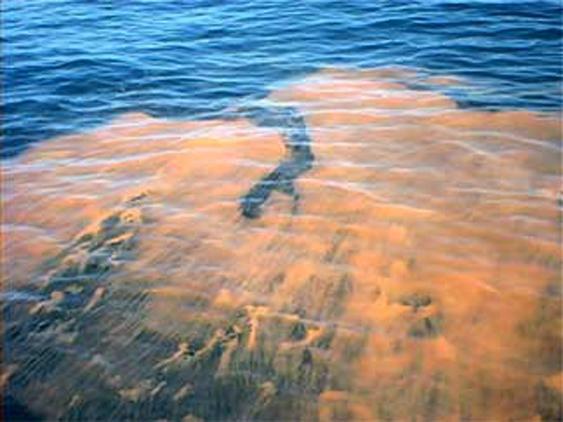
It sounds like a 1950s monster movie. A toxic algae bloom in the Pacific Ocean now stretches from California to Alaska, threatening fisheries and tourism. The bloom of microscopic organisms is up to 40 miles wide and 650 feet deep in places.
The algae bloom is growing because of warmer than usual temperatures in the Pacific Ocean. It has shut down important fisheries in several states because the toxins the algae produce can contaminate seafood. Algae blooms like this, which are often called red tides, are not unusual, but oceanographers say this one is larger and longer lasting than normal. It is producing higher levels of neurotoxins that create problems for the Pacific seafood industry, tourism and marine life in general.
The algae bloom was first spotted in May. Harmful algae blooms are usually limited to one area and disappear after a few weeks. This bloom has grown for months, shrinking and regrowing, but never going away.
The culprit appears to be a large patch of water in the northeast Pacific Ocean that is as much as 3 degrees C warmer than normal. This rise in temperature may be part of a normal cycle or it could be linked to global climate change.
The National Oceanic and Atmospheric Administration (NOAA) is leading a survey team to study the algae bloom. The brownish bloom was particularly thick off the coast of Santa Barbara, CA, and appears to be dominated by one type of algae that produces the neurotoxin domoic acid.
Domoic acid is harmful to people, fish and marine life. It accumulates in anchovies, sardines and other small fish as well as in shellfish that eat algae. In people, it can trigger amnesic shellfish poisoning, which can cause permanent loss of short-term memory in severe cases. There have been no reports of human illnesses linked to this bloom, but California health officials warn against eating noncommercial mussels and clams, or anchovy, sardines or crabs caught off Monterey, Santa Cruz and Santa Barbara counties. More than half the Washington coast is closed to crab fishing.
